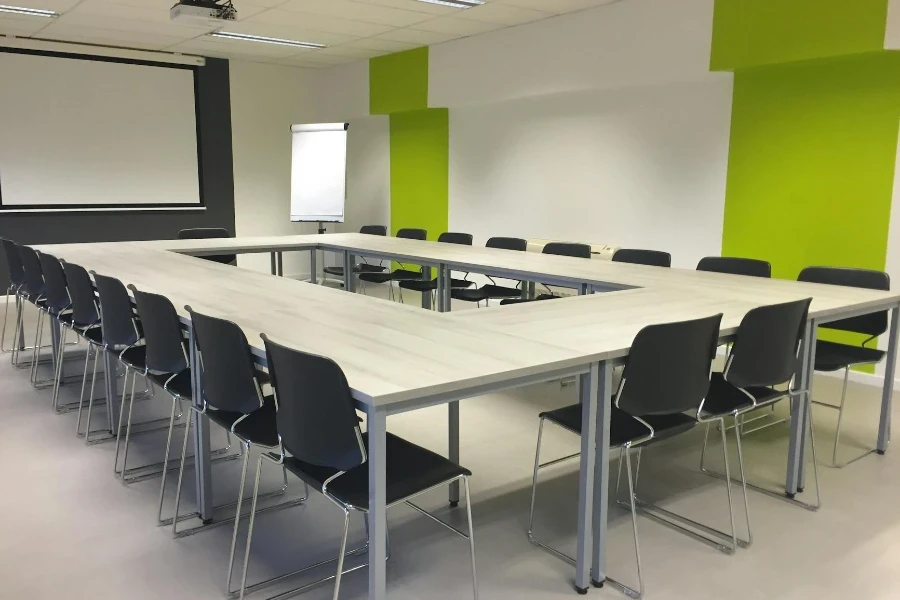It’s like you can take any room and turn it into a movie theatre or a presentation screen. The projector screen is a brilliant simple yet revolutionary invention. Put it in your living room, use it in the classroom or in a presentation, if you know a little bit more about projectors, you can definitely enjoy your viewing experience more, here we go.
Table of Contents:
– What is a projector screen?
– How does a projector screen work?
– Benefits and drawbacks of a projector screen
– How to choose a projector screen
– How to use a projector screen
What is a projector screen?

A projector screen is a pre-manufactured item that presents the projected image with certain aesthetic qualities, such as a smoother, brighter and more saturated colour than could otherwise be achieved by simply projecting onto a blank wall. There are different sizes, materials and formats of these pre-manufactured screens that are best suited to different viewing environments and projectors.
Today’s screens have become far more refined, incorporating endowments such as gain, which is the projected image’s ability to bounce light back to the audience, as well as viewing angles, which keeps the image crisp at various viewing positions. Perhaps most important is the material itself, whether matte white, high contrast or acoustically transparent, which varies depending on the light environment or setup.
Projector screens also differ in their deployment methods. There are manually pull-down screens that are perfect for classrooms and meeting rooms, or motorised screens that descend from a ceiling mount and disappear with the push of a button, providing an elegant solution for home theatres. Portable tripod screens and fixed-frame screens are suitable for mobile presentations and permanent installations, respectively.
How does a projector screen work?

The key task of a projector screen is to reflect the light projected on it back to the viewer’s eyes, so that they can see the image bright, with high contrast, and colours as faithful to the original ones as possible. When projecting on a plain wall, light gets absorbed and reflected by the surface, which can change its colour. The screen material is specially devised to provide a surface that is as flat and reflective as possible.
The surface of a projector screen is made up of tiny particles that are tailored to reflect light in a specific direction. Therefore, the surface minimises lamp light that cannot reach the viewer and makes a projected image appear much brighter than it would be on a plain white wall. The texture and colour of the surface are also chosen to improve the resolution and contrast of the projection.
Additionally, advanced screens include coatings or structures that improve image quality by suppressing glare, boosting colour saturation or facilitating 3D projection. This evolution turns the projector screen into a technology that can adapt to a variety of different projectors and projection environments.
Benefits and drawbacks of a projector screen

Unlike other surfaces upon which pictures can be projected, projector screens are designed to improve picture quality. They produce more vibrant, brighter and clearer pictures, which is especially important with high-definition movies or detailed presentations. Also, screens are made in different sizes and formats, allowing for customised viewing to a room or audience of any size.
Nevertheless, projector screens, too, have their disadvantages. The initial setup and cost is usually higher than that of a simple, bare wall, especially on higher-end, custom screens for specific projection needs. More critically, the physical footprint of a screen and projector rig can be an issue in smaller rooms or spaces with limited wall area.
How to choose a projector screen

There are a number of things to take into account when choosing a projector screen. The very first is the size and aspect ratio of the screen – whether you’re buying a fixed screen or a portable projection screen like one of those used by movie projectionists – the image needs to fit both the dimensions of the room and, obviously, the image output of the projector. A larger screen offers more immersion for the user, but it will need a higher specification projector to match, with more light and image resolution.
Then there is the screen material. A matte white screen is the most versatile, and you’ll get good (if not spectacular) image quality if your room is fairly dark. A grey screen can both improve contrast in ambient light and help make projected images appear three-dimensional and less flat. An acoustically transparent screen, like those made by Screen Excellence, is best when you can place your speakers behind the screen, as is the case with a home theatre.
At last, consider the screen’s installation. A fixed-frame screen suits dedicated rooms while a retractable option allows more flexibility for multipurpose rooms. A portable screen is great for outdoor movie nights and on-the-go presentations.
How to use a projector screen

The first factor in obtaining a great image from your projector screen is how it is installed: is it level? Is it at the proper height for viewing? Are you happy with how a retractable screen deploys? Does it use a manual or motorised system?
When setting up the projector, make sure the image projected onto the screen is undistorted and fits entirely. You may need to adjust the projector’s zoom and focus as well as the keystone correction on some projectors to achieve this. Use extra curtains or blinds to control ambient light, and make sure the audience is seated within the viewing angle of the screen.
The screen should also be maintained regularly as dust and fingerprints can impact image quality. This can be done using a soft dry cloth or a cleaner recommended by the manufacturer.
Conclusion
If you have ever seen a movie, seen a PowerPoint presentation at work, or looked at any kind of image displayed on a screen, then you have seen a projector screen. Projector screens are vitally important for displaying images, no matter if you are mirroring your laptop in your living room, giving a presentation at work, or watching a movie in a professional theatre. Knowing the details of how they work, how to get the most out of them, what to look for in selecting one, and how to use your projector with your projector screen ensures your images will be crisp and clear for all your audiences. Any space can be transformed into the ultimate image display with the right projector screen.




